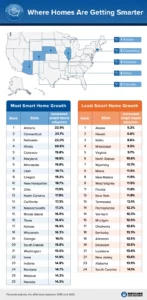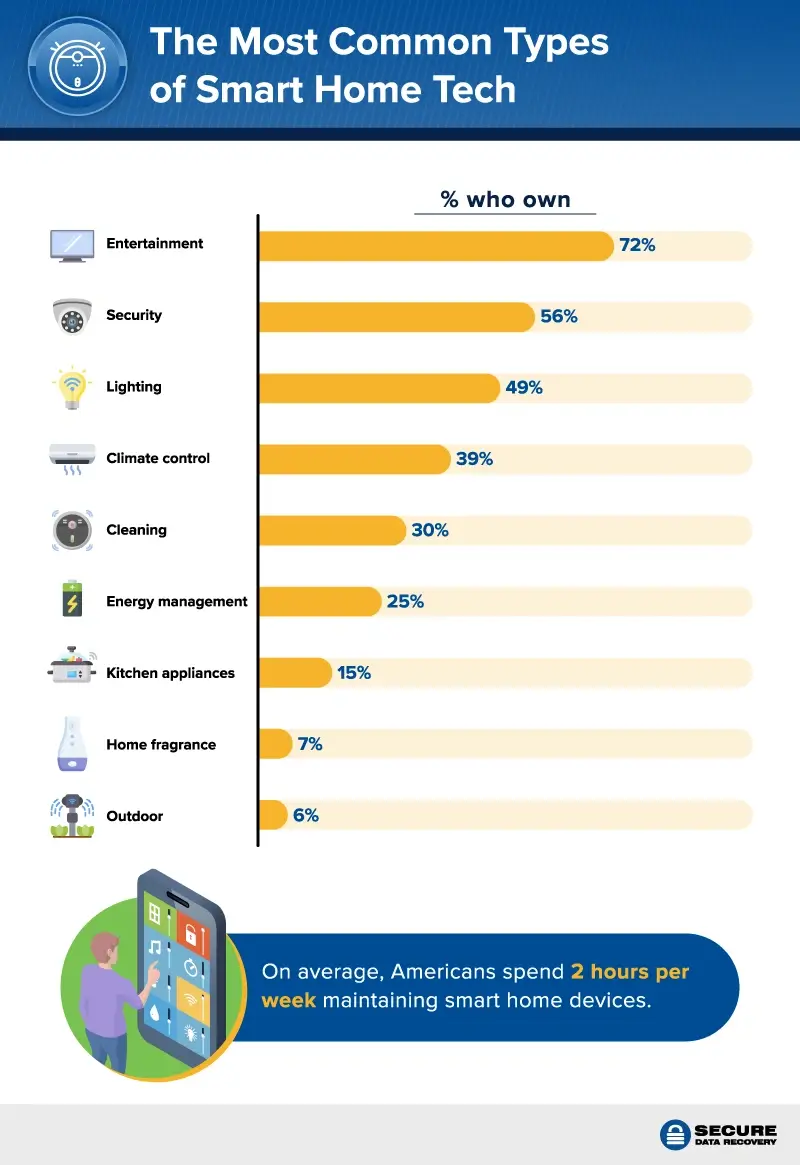 You cannot force a home to read a book, nor can you force it to attend classes, but you can install internet-based technology into it, essentially letting your home talk to you in emergencies and learn your schedules to save energy.
You cannot force a home to read a book, nor can you force it to attend classes, but you can install internet-based technology into it, essentially letting your home talk to you in emergencies and learn your schedules to save energy.
According to Secure Data Recovery, if you have ever used an app to open your garage door or turn on your lights, you are a part of the smart home revolution, a space wherein innovation has met the need of convenience.
Further, an increasing number of households are adopting this technology often painted with the allure of streamlining daily routines. But it begs the question: are our homes truly becoming "smarter," or are we simply repackaging old technology with modern flair? Remember The Clapper automatic light switch first sold in 1984? Not so different from your app-controlled lighting, right?
Utilizing internal data from just over 1,000 individuals, along with data compiled by the U.S. Department of Commerce, Secure Data Recovery found these states to be the most progressive in adopting smart home technology:
- Connecticut, Utah, and Maryland are the states with the smartest homes.
- Arizona, Connecticut, and Nebraska have seen the greatest acceleration in smart home tech over time.
- Security systems are the #1 most annoying type of smart tech according to Americans.
- According to 1 in 3, having smart devices is fun, but they don't add much value to life beyond that.
Drawing from the latest insights by the U.S. Department of Commerce, there's a fascinating digital divide emerging across America's landscape.
In the race to equip homes with the latest smart home technology, Connecticut stands proudly at the forefront. A notable 28.2% of its residents have embraced this tech, converting their living spaces into hubs of digital innovation. This achievement crowns Connecticut as the epicenter of the nation's smartest homes.
However, not every state shares this fervor for smart living. Alaska, known for its majestic wilderness and awe-inspiring landscapes, seems to prefer a simpler living approach. Only 13% of Alaskans have integrated smart technology into their homes, marking it the state least influenced by this tech wave.
Following closely in this digital detachment are Mississippi, Hawaii, Wyoming, and Maine, each with adoption rates hovering between 14.2% and 15.9%.
And the numbers found by Secure Data Recovery are doing anything but regressing—adoption rates are shooting up from an average of 6.9% in 2015 to today’s 22.3%.
However, not all states share this rapid trajectory. At the tail end of the spectrum, Alaska again remains more resistant to the allure of smart technology. With a growth of just 5.2% over time, it's the state most hesitant to the digital home revolution. Following Alaska's cautious footsteps are Hawaii, Idaho, Mississippi, and Virginia, with growth margins between 6.6% and 9.7%.
Most smart home technology is in the entertainment space, with 72% of smart devices being of that nature. But, while convenient, it is also a time sink, with users reporting an average of eight hours a month spent maintaining these smart devices.
Peeling back another layer reveals subtle gender dynamics that prompt reflection. Men, on average, spend slightly more time tending to these devices, clocking in at 2.24 hours weekly. In contrast, women dedicate about 1.88 hours.
But beyond the glitches and gripes, there's a philosophical debate emerging — 1 in 3 Americans concede that while these devices introduce an element of fun, they don't necessarily add substantive value to life.

Interestingly, Gen Z, despite being born into the digital era, are the most skeptical of the value of smart tech, with 43% echoing this sentiment. Following them are Boomers at 33%, millennials at 32%, and Gen X at 28%.
One interpretation could be that Gen Z, having never known a world without these technologies, may take them for granted or not fully recognize their transformative impact. In contrast, older generations have seen the evolution and might better appreciate the innovations.
Click here to view the report from its source.

 theMReport.com Your trusted source for mortgage banking news
theMReport.com Your trusted source for mortgage banking news








